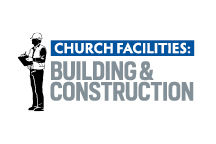
Tried-and-true strategies for making it a reality for your next church construction project
By Rodney James

Over nearly 30 years in business — and with church builds from coast to coast — our team of construction experts has learned a thing or two about how to ensure projects are completed on time, and within the financial parameters.
In fact, if you do it right (and efficiently count the costs), it’s absolutely possible to complete your project under budget — something that supposedly “just never happens” in the construction world.
To make it happen, there are five strategies you need to know.
#1: Understand the entire process of project due diligence. After defining the vision — and before you begin to think about the details of the building itself — consider the impacts. Some people call this “doing your due diligence” on the property.
 Translation: If you’re doing new construction, you must first determine if the site is fully developed.
Translation: If you’re doing new construction, you must first determine if the site is fully developed.
One client in Alabama learned this lesson the hard way. Unexpectedly, the church had to incorporate utilities under a four-lane highway and run them quite a long distance to the property. This came with a $200,000 price tag! Obviously, this cost was immediately taken out of the overall budget, which affected the end result.
The church demanded an explanation from the architect, but he couldn’t help. No architect will question the potential difficulties of bringing in the utilities; it’s just not within their scope.
#2: Get your priorities straight — right from the start! A wise church once asked: “Do we determine what we want, and then figure out how

much it will cost? Or, do we figure out how much we have to spend, and then decide what we can afford to build?”
Most churches answer this question backwards; they start with what they want to do, and then figure out what it’s going to cost.
The vast majority of the time (82 percent), projects that begin without a budget, never get completed.
So, do the budget first, before you begin that first phase of due diligence. You can expect the due diligence to have associated costs which must come right out of the budget before you pay for even one square foot of the new building.

#3: Before proceeding: Check twice, and complete all due diligence. Due diligence gathers data which warrants the allocation of associated costs. Only after you’ve taken the time to complete all due diligence — and accurately apply cost projections — can you know how much is left for the design and construction of your building.
Due diligence takes some time, but it’s an investment that will prevent a lot of heartache (or even disaster) in the future.
#4: Design your building within budget parameters. Designing a building has several phases, starting with the concept, or schematic design. During this phase, you should have great input on what you desire in your building. Your design team should have an intimate understanding of your ministry. To this end, they should first ask how you do ministry, not what you want in your building.
While design is often fluid and changes many times, these changes should be held to an absolute minimum once this phase is complete. Changing features after you start the next phase of the design process costs money.
#5: Get accurate pricing prior to the design. This is big! The biggest, in fact! You absolutely must make sure cost estimate are done frequently, and are detailed during design.
You also need to determine project costs, not building costs. Ascertaining basic square footage estimates of what you think it’s going to cost is a dangerous game. You need someone who truly understands what the real costs of construction will be.
Rodney James served as executive pastor, then senior pastor, at Sequoyah Hills Baptist Church in Tulsa, OK, for 20 years. In that time, he led and completed multiple building and renovation projects. In 2012, James joined Churches by Daniels, Inc., in Broken Arrow, OK, as director of business and finance. The company specializes in designing and building churches nationwide.


